Japanese Cooking 101, Lesson 1-Addendum: Making Miso Soup and Clear Soup with Dashi
Now that you know how to make a proper dashi, you're 90% on your way to making delicious miso soup and clear soup. If you have ever wondered why your miso soup doesn't taste quite right, and you were omitting the dashi part...you're in for a treat!
Basic miso soup (味噌汁, misoshiru)
For this lesson I will be using one ingredient, potato, that should be familiar to anyone, and another, wakame seaweed, which may be more unusual but is a standby in Japanese kitchen. It also gives me a chance to show you how to handle miso soup additions that have different cooking times.
A bit about wakame
Wakame (わかめ) is very different from kombu, but is probably the second most used seaweed in Japanese cooking. Unlike kombu wakame doesn't have a whole lot of umami, although it has a pleasant sea-flavor. It's enjoyed more for its texture, which can be kind of chewy and squeaky when raw, or soft once you cook it even briefly.
Wakame is available in two forms: fresh (raw) and packed in salt; or dried. I usually have the dried kind around because it's more convenient (especially when you live far away from a Japanese grocery store like me) and that is what I used here:
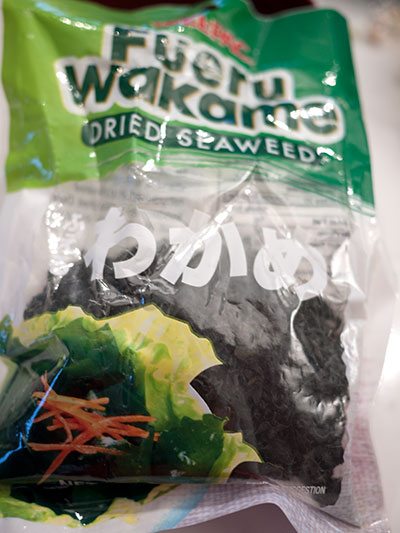
Dried wakame expands to 4-5 times its volume when reconstituted, so use sparingly. Dried wakame usually comes already chopped up, so all you need to do is to take out some and reconstitute in cold water is using in salads or side dishes. For soup you can just put it directly into the soup.
Fresh wakame packed in salt should be stored in the refrigerator. Before using, rinse off the salt under running water, then blanch briefly by pouring boiling water over it. If using in a salad, refresh in cold water. Fresh wakame comes in long whole strands, so you need to chop it up before using. It also expands a bit (about 1.5 times or so) so don't pull out more than you need from that tangle in the packet.
The miso I used, and how much to add to your soup
For this miso soup I used a white Shinshuu miso. Shinshuu is the old name of Nagano Prefecture, and is known for its excellent miso. It's fairly mild on the saltiness scale.
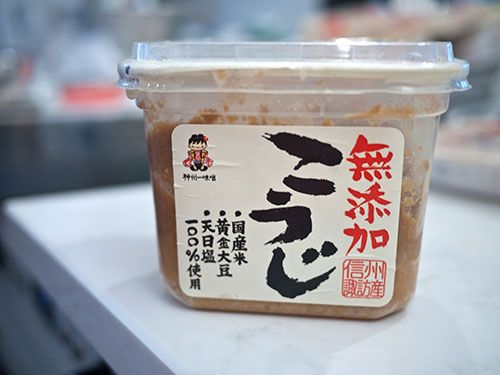
Every miso has a different level of salt, and the worst thing you want to do is to add too much miso to your soup. A general rule of thumb is to use about 1 tablespoon per cup (U.S. measure, 236.5ml) or 1/4 l (250ml) but if you have a very salty red miso for example, you may need less. So when you are trying out a new miso, always add less than you think you need. It's easy to add more. Since we'll be using 1000 ml / around 4 cups for this recipe, we'll start with 3 tablespoons and add more if we think we need it.
(See: Japanese miso primer for more about different types of miso.)
Potato and wakame miso soup (じゃがいもとわかめの味噌汁)
For 3-4 servings
- 1000ml / 4 U.S. cups dashi
- 1 medium potato, peeled and cut into small pieces
- 2-3 tablespoons of dried wakame, or 4-5 tablespoons (about 2 strands) of fresh wakame
- 3-4 tablespoons of miso
- Bring the dashi up to a boil, and add the potato. Lower to a simmer, and cook until the potatoes are soft, around 10 minutes depending on how big the pieces are.
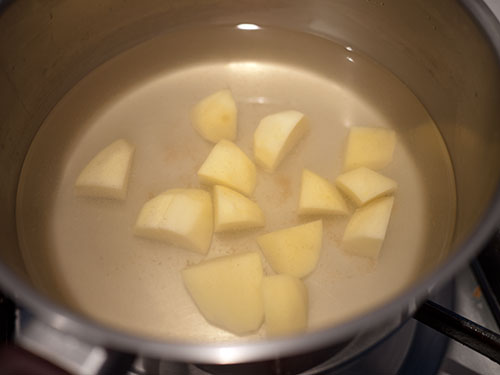
- In the meantime, if you're using fresh wakame, process it as detailed above. Dried wakame can just be thrown in there without reconstituting. When the potato pieces are tender, add the wakame.
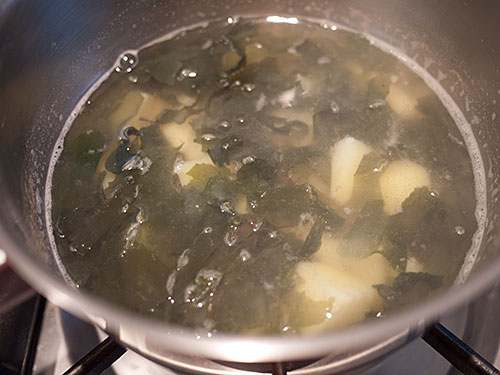
- Put the miso paste in a bowl and add some of the liquid from the soup.
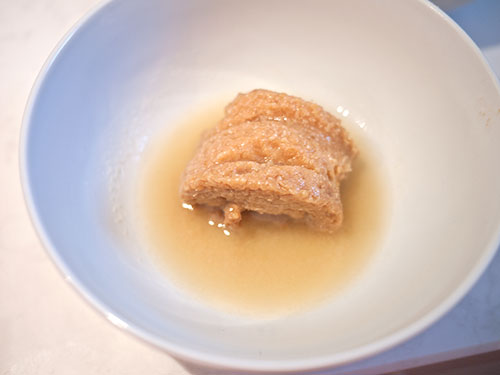
- Mix it around in the liquid until it's dissolved. Never add miso paste directly to soup: always dissolve it first. Otherwise you run the risk of salty clumps or miso in the soup, or of overcooking it. (Incidentally, I always do this dissolving part in the bowl of the ladle I'm using, as do most Japanese home cooks. Once you get more used to making miso soup you can try that too. Less washing up to do!)
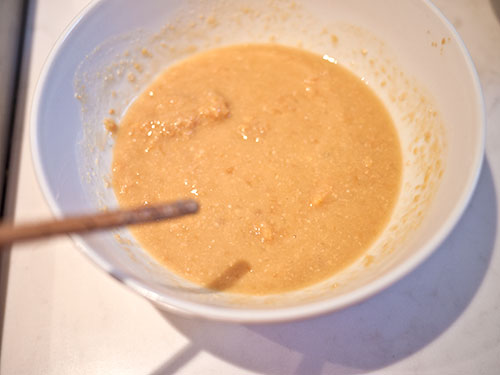
Add the dissolved miso to the soup, then immediately turn off the heat. Miso should not be boiled, or it starts to turn a bit grainy. (Mind you it will still taste fine, so if this happens to you don't throw away your soup or anything). Taste your soup, and if needed add a bit more dissolved miso.
Serve in a bowl. The combination of potato with soft wakame is really homey and delicious. Take your time to inhale the aroma of the soup. If you serve this to a homesick Japanese person they may cry in gratitude.

Tip: If you can't get wakame, you can use some shredded spinach (as I used in the clear soup below) instead.
Miso soup summary
- Cook any hard ingredients until tender in the dashi.
- Add no-cook or almost-no-cook ingredients at the end.
- Always dissolve the miso before adding to the soup, using some of the dashi in the pot.
- Add less miso than you think it needs, then add as needed. 1 tablespoon = 1 U.S. cup or around 250ml of dashi is a fairly good baseline, but all misos are different.
- Never let miso soup boil after adding the miso.
Variation: Clear soup (お吸い物 - osuimono or おすまし - osumashi)
Delicate clear soup or osuimono may seem even easier to make than miso soup on the surface, but getting the flavor balance just right can be a bit tricky. A clear soup really must have a great tasting dashi as a base. Many cooks prefer to use a kombu dashi which is more subtle and refined according to some, but the standard kombu + katsuobushi dashi is fine too.
Here I have used two ingredients that should be easy to get anywhere.
Chicken supreme (tenders) and spinach clear soup (鶏ささみとほうれん草のお吸い物 - tori sasami to hourensou no osuimono)
For 3-4 servings
- 1000ml / 4 U.S. cups dashi
- 1 teaspoon soy sauce (light soy sauce preferred, but dark is ok)
- 2 teaspoons sake
- 1 teaspoon mirin
- Salt to taste
- 1 chicken tender or supreme (the long, thin, tender part that's on the underside of a chicken breast), cut into small slivers
- 3-4 spinach leaves, stalks removed and shredded
I didn't include any step by step photos here since you'll just see a pan of clear liquid mostly! But here are the steps.
- Bring the dashi to a boil, then lower the heat to a simmer.
- Add the soy sauce, sake and mirin. (Note for people who can't use these ingredients - just leave them out; the soup will still taste pretty good.)
- Add the chicken, then add the spinach. Both will cook almost immediately.
- Taste the soup. Add a pinch of salt if you think it needs it, then taste again, until it has the right amount of saltiness.
- Serve in a bowl.

So there you have it! You know how to make great miso soup and clear soup!
If you would like to do so, please link to a picture of your results in the commencts right here, via Twitter to @justbento or @makiwi, or on the Facebook page.
Filed under: soup miso washoku japanesecooking101